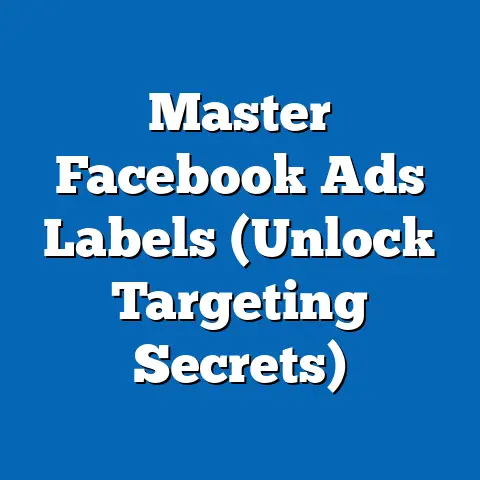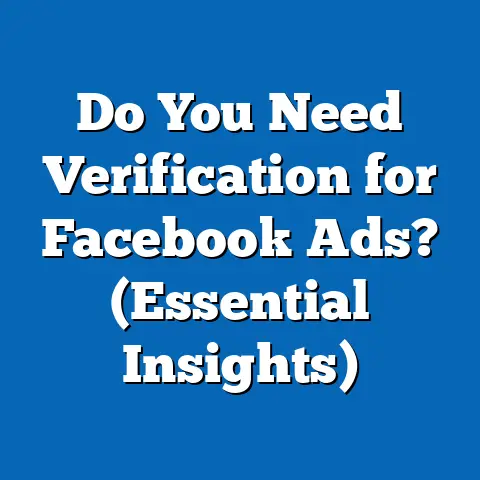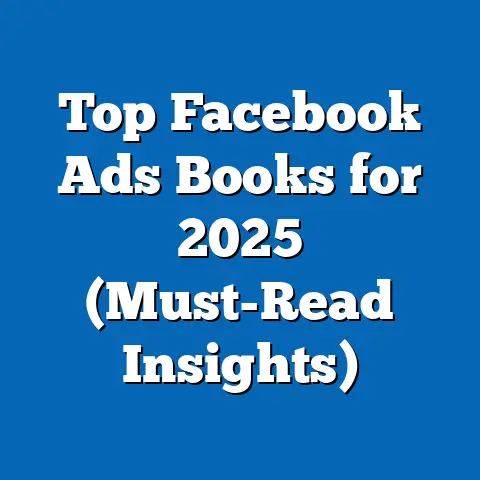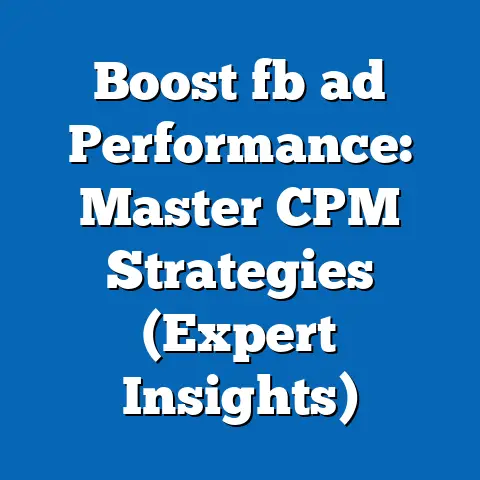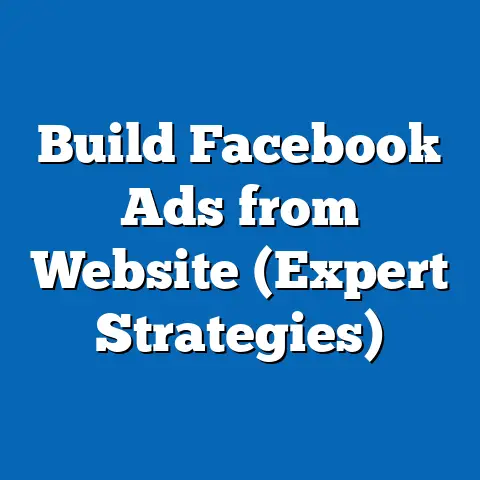Maximize Hold Rate with Facebook Ads (Proven Strategy)
In the realm of digital advertising, particularly on platforms like Facebook, the concept of “durability” often emerges as a central myth that shapes campaign strategies and consumer perceptions. Durability myths refer to the belief that certain advertising tactics, creative elements, or messaging styles have a lasting, almost timeless impact on audience engagement and conversion rates—regardless of evolving trends or platform algorithms. This notion, while appealing, can lead marketers to cling to outdated practices under the assumption that “what worked before will work again,” often at the expense of innovation and adaptability.
These myths are rooted in a blend of historical marketing successes and a psychological desire for certainty in an unpredictable digital landscape. However, the reality of maximizing “hold rate”—a metric often used to describe the ability of an ad to retain audience attention and prevent drop-off during the initial seconds of exposure—requires a more nuanced, data-driven approach. This article will first explore the origins and implications of durability myths in advertising, then delve into proven strategies for optimizing hold rate with Facebook Ads, blending historical context with contemporary data and expert insights.
Understanding durability myths is critical because they influence how marketers allocate budgets, design creatives, and interpret performance metrics. By dissecting these myths, we can better appreciate the need for agility in a platform like Facebook, where user behavior and algorithmic changes demand constant recalibration. Let’s begin by examining the defining characteristics of durability myths and their societal and economic implications.
Durability Myths: Defining Characteristics and Historical Context
What Are Durability Myths?
Durability myths in advertising are characterized by the overreliance on past successes or “golden rules” believed to guarantee consistent results over time. Common examples include the belief that long-form video ads always outperform short-form content, that emotional storytelling universally trumps product-focused messaging, or that specific color schemes (like red for urgency) are inherently more effective. While some of these tactics may have worked in earlier digital or traditional advertising eras, their assumed permanence ignores the dynamic nature of consumer preferences and platform ecosystems.
These myths often stem from confirmation bias, where marketers attribute success to a single factor (e.g., a viral ad campaign) without considering external variables like timing, audience demographics, or platform updates. Additionally, durability myths are perpetuated by anecdotal evidence within the industry—case studies or “best practices” shared at conferences that become gospel without rigorous testing in new contexts.
Historical Context: The Roots of Durability Myths
The origins of durability myths can be traced back to the early days of mass media advertising in the mid-20th century, when television and print dominated. During this era, campaigns like Coca-Cola’s “I’d Like to Buy the World a Coke” (1971) or Apple’s “1984” Super Bowl ad demonstrated the power of emotional resonance and bold storytelling, cementing the idea that certain creative approaches could achieve near-universal impact. Marketers of that time operated in a relatively stable media environment, where audience attention was less fragmented, and campaigns could rely on broad, consistent exposure.
The advent of the internet and social media in the late 1990s and early 2000s introduced new variables, yet many advertisers carried over traditional assumptions into the digital space. For instance, the early success of banner ads led to a belief in static formats as inherently effective, even as click-through rates plummeted with banner blindness. Similarly, when Facebook Ads launched in 2007, marketers often applied TV-era principles to a platform where user engagement was far more interactive and data-driven, perpetuating myths about what “always works.”
Significant events, such as the 2018 Cambridge Analytica scandal, which prompted major privacy updates on Facebook, or the 2021 iOS 14.5 update impacting ad tracking, have repeatedly challenged durability myths. These shifts forced marketers to confront the impermanence of once-reliable strategies, yet the allure of “timeless” tactics persists, often driven by a reluctance to embrace uncertainty or invest in continuous testing.
Societal and Economic Implications
Durability myths have far-reaching implications for both society and the economy. On a societal level, they contribute to a homogenization of advertising content, as brands recycle “proven” formulas rather than experimenting with messaging that reflects diverse or evolving cultural values. This can stifle creativity and limit representation, as campaigns may prioritize safe, outdated tropes over authentic engagement with modern audiences.
Economically, an overreliance on durability myths can result in wasted ad spend and missed opportunities. According to a 2022 report by eMarketer, U.S. digital ad spending reached $211 billion, with Facebook (Meta) accounting for a significant share. Yet, brands that fail to adapt to platform changes or audience shifts risk diminishing returns, as static strategies underperform in a competitive landscape. For small businesses with limited budgets, clinging to myths can be particularly detrimental, diverting resources from data-driven experimentation.
Moreover, durability myths can erode trust between marketers and consumers. When ads rely on outdated or overly formulaic approaches, they may come across as inauthentic or irrelevant, alienating audiences in an era where personalization is paramount. This disconnect underscores the need to move beyond myths and toward strategies grounded in real-time data and user behavior.
Maximizing Hold Rate with Facebook Ads: A Proven Strategy
Having unpacked the pitfalls of durability myths, we now turn to actionable, evidence-based strategies for maximizing hold rate with Facebook Ads. Hold rate, often measured as the percentage of viewers who watch an ad beyond the critical first 3-5 seconds, is a key indicator of initial engagement and a predictor of downstream metrics like click-through rate (CTR) and conversion. In a platform where users scroll through content at lightning speed, capturing and retaining attention is both an art and a science.
The strategies outlined below draw on quantitative data from industry reports, qualitative insights from marketing experts, and case studies of successful campaigns. They also account for the unique features of Facebook’s advertising ecosystem, including its algorithm, audience targeting capabilities, and creative formats.
Understanding Hold Rate: Why It Matters
Hold rate is a critical metric for Facebook Ads because it directly impacts an ad’s ability to deliver its message before a user skips or scrolls away. According to a 2021 study by Meta, ads that retain viewers for at least 3 seconds are 2.5 times more likely to drive brand recall, while those holding attention for 10 seconds see a significant uptick in purchase intent. This underscores the importance of the initial hook in combating short attention spans, especially among younger demographics like Gen Z, who are accustomed to rapid content consumption on platforms like TikTok.
Hold rate also influences Facebook’s algorithm, which prioritizes engaging content in users’ feeds. Ads with higher hold rates are often rewarded with lower cost-per-impression (CPM) and broader reach, creating a virtuous cycle of performance. Thus, optimizing for hold rate is not just about creative impact—it’s a strategic lever for cost efficiency and scalability.
Strategy 1: Front-Load Value with Compelling Hooks
One of the most effective ways to boost hold rate is to front-load value in the first few seconds of an ad. This means delivering a clear, attention-grabbing message or visual that immediately communicates why the viewer should keep watching. Durability myths might suggest relying on slow-build storytelling, but data shows that 65% of viewers decide whether to continue watching within the first 3 seconds, per a 2020 Nielsen study.
Successful tactics include posing a provocative question (“Struggling to sleep?”), showcasing a striking visual (e.g., a product in action), or leveraging humor or surprise. For example, a 2022 campaign by Dollar Shave Club used a comedic opening scene of a man dramatically struggling with a dull razor, achieving a 78% hold rate past 5 seconds, according to Meta’s case study data. The key is to align the hook with the target audience’s pain points or interests, ensuring relevance from the outset.
It’s also critical to adapt hooks to platform-specific behaviors. On Facebook, where autoplay videos start without sound, silent storytelling through bold text overlays or expressive visuals can capture attention before audio kicks in. Testing multiple hook variations via A/B testing ensures marketers identify what resonates most with their audience.
Strategy 2: Optimize for Mobile-First Viewing
With over 98% of Facebook users accessing the platform via mobile devices (Statista, 2023), optimizing ads for mobile-first viewing is non-negotiable for maximizing hold rate. Durability myths often prioritize desktop-optimized creatives, but mobile users demand fast-loading, vertically formatted content that fits their screen and scrolling habits. Ads that fail to meet these expectations risk immediate drop-off.
Best practices include using a 9:16 or 4:5 aspect ratio for videos, ensuring text is legible on small screens, and minimizing load times with lightweight assets. A 2021 Meta report found that mobile-optimized ads achieve a 27% higher hold rate compared to non-optimized formats. Additionally, incorporating interactive elements like polls or swipe-up carousels can sustain engagement, as they invite active participation rather than passive viewing.
Marketers should also consider thumb-friendly design, placing key calls-to-action (CTAs) within easy reach of a user’s thumb. This subtle adjustment can reduce friction and encourage viewers to stay engaged longer, boosting hold rate and subsequent actions.
Strategy 3: Leverage Audience Insights for Personalization
Personalization is a cornerstone of modern advertising, and it plays a pivotal role in improving hold rate on Facebook. Durability myths may advocate for one-size-fits-all messaging, but today’s consumers expect content tailored to their interests, behaviors, and demographics. Facebook’s robust targeting tools—despite privacy-related limitations post-iOS 14.5—still allow for granular segmentation based on interests, lookalike audiences, and past interactions.
Using dynamic creative optimization (DCO), advertisers can test multiple ad variations (e.g., different headlines, images, or CTAs) and let Facebook’s algorithm serve the most relevant version to each user. A 2022 study by Forrester found that personalized ads on social platforms achieve a 30% higher engagement rate, including improved hold times. For instance, a fitness brand targeting both beginners and advanced athletes might show a beginner-friendly workout in one ad variation and a high-intensity challenge in another, ensuring relevance from the first frame.
Qualitative feedback from focus groups also highlights that overly generic ads feel “spammy,” prompting quick skips. By contrast, ads that reflect a viewer’s lifestyle or needs—such as localized offers or culturally relevant imagery—create an instant connection, sustaining attention and trust.
Strategy 4: Incorporate Social Proof and Urgency
Humans are inherently social creatures, and incorporating elements of social proof and urgency can significantly enhance hold rate by tapping into psychological triggers. Social proof, such as customer testimonials, user-generated content (UGC), or influencer endorsements, builds credibility and relatability in seconds. A 2023 survey by Stackla revealed that 79% of consumers trust UGC more than brand-created content, making it a powerful tool for retaining attention.
Urgency, on the other hand, compels viewers to act quickly, often by highlighting limited-time offers or scarcity (“Only 24 hours left!”). While durability myths might warn against “gimmicky” tactics, data shows that urgency-driven ads can increase hold rate by up to 22%, per a 2021 Meta analysis, as they create a fear of missing out (FOMO). Combining social proof with urgency—such as showcasing real customer reviews alongside a countdown timer—can amplify this effect.
However, balance is key. Overuse of urgency can lead to audience fatigue or skepticism, so it’s essential to ground claims in authenticity (e.g., genuine stock limitations) and vary messaging to avoid predictability.
Strategy 5: Test, Analyze, and Iterate with Data
Finally, the most proven strategy for maximizing hold rate is a commitment to continuous testing and data analysis, directly countering the static thinking of durability myths. Facebook’s Ads Manager provides detailed metrics on hold rate, audience retention graphs, and engagement breakdowns, enabling marketers to identify where drop-off occurs and why. For instance, if 50% of viewers leave at the 4-second mark, the issue may lie in a weak transition after the initial hook.
A/B testing different creative elements—such as video length, pacing, or CTA placement—allows brands to pinpoint what drives retention. A 2022 case study by Hootsuite demonstrated that a retail brand increased hold rate by 35% after testing shorter, punchier videos based on audience feedback. Expert perspectives, like those from digital marketing consultant Neil Patel, emphasize that “data is the antidote to assumption,” urging marketers to let performance metrics guide strategy over outdated rules.
Iteration also means staying attuned to platform updates and cultural shifts. For example, the rise of short-form content on Instagram Reels has influenced expectations on Facebook, pushing brands to experiment with quicker, snackable ads. By embracing a test-and-learn mindset, marketers can adapt to these changes in real time, ensuring sustained relevance.
Comparing Generational Responses to Hold Rate Strategies
Generational differences play a significant role in how hold rate strategies perform, as each cohort brings unique values, tech habits, and attention patterns to their interaction with ads. While avoiding stereotypes, it’s worth exploring how Baby Boomers (born 1946-1964), Millennials (born 1981-1996), and Gen Z (born 1997-2012) respond to the tactics outlined above, based on available research.
Baby Boomers, often less accustomed to rapid digital content, may respond well to clear, straightforward hooks and social proof, valuing trust and familiarity. A 2021 AARP study found that 68% of Boomers are more likely to engage with ads featuring real customer stories, suggesting longer hold times when credibility is established early.
Millennials, shaped by the early internet and social media, prioritize authenticity and personalization. They’re quick to scroll past generic content but will linger on ads that feel tailored or purpose-driven, per a 2022 Deloitte report showing 74% of Millennials value brands with aligned values. Mobile optimization is crucial for this tech-savvy group, as they often consume content on the go.
Gen Z, the digital natives, have the shortest attention spans, with studies like a 2023 Microsoft report estimating an 8-second threshold for engagement. They gravitate toward fast-paced, visually striking content with humor or cultural relevance, often on platforms like TikTok, which influences their expectations on Facebook. Urgency and interactive formats also resonate, as Gen Z seeks instant gratification and participation.
These differences highlight the importance of audience segmentation in hold rate optimization. While no generation is monolithic—diversity in income, location, and personal interests always applies—tailoring strategies to generational tendencies can enhance retention without resorting to broad assumptions.
Broader Implications for Society, Culture, and the Workplace
Culturally, the emphasis on mobile-first, visually driven ads contributes to a global visual language, where memes, emojis, and short clips transcend linguistic barriers. However, it also risks prioritizing entertainment over substance, potentially sidelining deeper narratives or complex issues that require longer attention spans. Marketers must balance engagement with responsibility, ensuring ads don’t perpetuate shallow consumerism at the expense of meaningful dialogue.
In the workplace, the focus on hold rate optimization underscores the growing importance of data literacy and adaptability among marketing teams. As durability myths give way to agile, test-driven approaches, professionals must upskill in analytics, creative experimentation, and cross-platform trends. This shift also fosters collaboration between creative and technical roles, as storytelling and data analysis become equally vital to campaign success.
Economically, improved hold rates can drive efficiency in ad spend, benefiting businesses of all sizes. For small and medium enterprises (SMEs), which often rely on Facebook Ads for cost-effective reach, mastering hold rate strategies can level the playing field against larger competitors. Yet, the pressure to constantly innovate may strain resources, highlighting the need for accessible tools and education from platforms like Meta.
Conclusion: Looking Forward with Realistic Optimism
Maximizing hold rate with Facebook Ads is a dynamic challenge that requires marketers to shed the comfort of durability myths and embrace strategies rooted in data, relevance, and adaptability. By front-loading value, optimizing for mobile, personalizing content, leveraging psychological triggers, and iterating through testing, brands can capture and retain attention in a crowded digital space. These approaches, grounded in contemporary research and platform-specific insights, offer a proven path to engagement while acknowledging the diversity of audience responses across generations.
Looking ahead, the landscape of digital advertising will continue to evolve with advancements in AI, augmented reality, and privacy regulations, each reshaping how hold rate is measured and achieved. While it’s impossible to predict every change, the principles of agility and audience-centricity will remain foundational. Marketers must stay curious, balancing the pursuit of immediate metrics like hold rate with the long-term goal of building trust and value for consumers.
Uncertainty is inevitable, but so is opportunity. By moving beyond outdated myths and committing to continuous learning, the advertising community can not only maximize hold rate but also contribute to a digital ecosystem that rewards creativity, authenticity, and connection. As we navigate this ever-shifting terrain, the question remains: How will we adapt to the next wave of change while keeping the human element at the heart of every ad?

